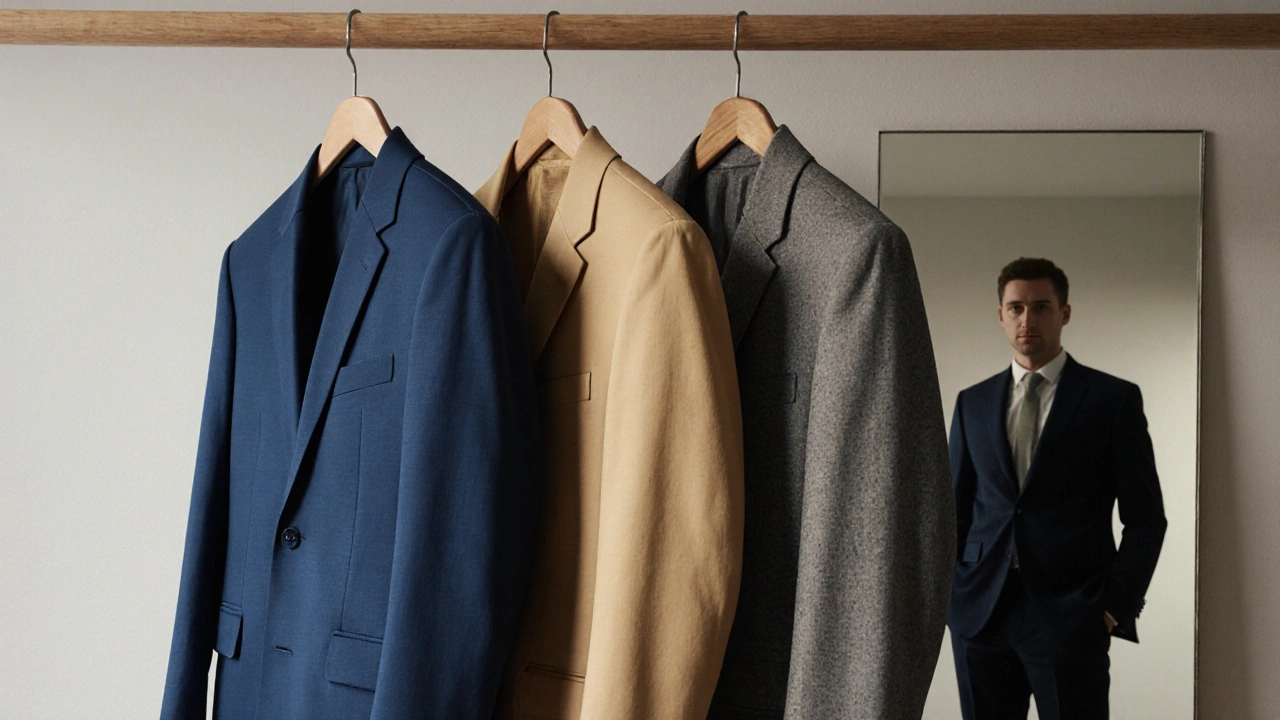Mindset Awareness Assessment
This assessment helps you identify your current mindset patterns and provides guidance based on the article's principles of mental clarity and quiet strength.
Note: Your answers will remain private. This tool is designed to increase self-awareness, not judge your character.
Your Mindset Profile
Every morning, you wake up with a choice-not just about what to wear, or what to eat, or even what to do-but about how to meet the day. That quiet, internal decision is your mindset. It’s not loud. It doesn’t announce itself. But it shapes every conversation, every decision, every moment of silence between thoughts. And unlike your suit or your watch, no one else sees it-until they feel its effect on you.
What Mindset Really Means
A mindset isn’t a buzzword. It’s the lens through which you interpret the world. It’s the unspoken rule you follow when someone cuts you off in traffic, when a project fails, when a colleague takes credit for your work. Is your default reaction to blame, to retreat, to rage? Or is it to observe, to adapt, to move forward with dignity?
Think of it like the foundation of a house. You don’t see it, but if it’s cracked, everything above it will shift. A fixed mindset assumes abilities are set in stone-your intelligence, your charm, your resilience. A growth mindset understands these are cultivated, not inherited. One leads to resignation. The other to quiet mastery.
Start With Awareness
You can’t choose a mindset you don’t recognize. Most men drift through their days reacting-not responding. They let stress, fatigue, or old habits dictate their inner tone. The first step is to pause. Not for hours. Not for meditation apps. Just for five seconds before you answer an email, before you speak to your partner, before you scroll through your phone.
Ask yourself: What am I telling myself right now?
Is it: “I’m not cut out for this”? Or: “This is hard, but I’ve handled harder”?
Write it down. Just once a day. Keep a small notebook on your desk. No poetry. No journaling. Just the raw thought. After a week, you’ll see patterns. You’ll notice which thoughts show up when you’re tired. Which ones appear after a bad meeting. Which ones are borrowed from your father, your old boss, or that one critic who never said anything useful.
Choose Your Anchors
Men don’t change their mindset by wishing harder. They change it by replacing one habit with another. You need anchors-small, repeatable rituals that ground you in the version of yourself you want to be.
- Before your first coffee, sit quietly for three minutes. Breathe. Don’t solve anything. Just be.
- When you walk into a room, take one slow step before speaking. Let your posture settle before your voice does.
- At the end of the day, name one thing you did well-even if it was just not losing your temper.
These aren’t affirmations. They’re rehearsals. You’re training your nervous system to default to calm, not chaos. Over time, your mind begins to believe what your actions show it.

Surround Yourself With Quiet Influence
Your mindset doesn’t live in isolation. It’s shaped by who you spend time with-and who you allow to occupy mental space.
There’s a difference between a man who talks about resilience and one who demonstrates it. The first tells stories. The second shows up, quietly, when things get messy. He doesn’t need to say he’s strong. You feel it in the way he handles pressure.
Seek out those men. Not the ones with the biggest titles or the loudest opinions. The ones who listen more than they speak. Who keep their word. Who don’t need to win every argument to feel whole. Read their books. Study their silence. Let their steadiness become your reference point.
And walk away from the ones who treat negativity like a sport. The chronic complainers. The energy vampires. You don’t have to be rude. Just absent. Your mind is not a public forum.
Reframe Failure as Feedback
Failure is not the opposite of success. It’s part of the process-especially for men who aim for something meaningful. The difference between a man who breaks under pressure and one who builds under it isn’t talent. It’s how he interprets setbacks.
When your proposal gets rejected, your investment loses value, or your team underperforms, don’t ask: Why me? Ask: What is this teaching me?
One client, a 48-year-old architect, lost his biggest project after two years of work. Instead of retreating, he wrote a letter to his team: “This didn’t go as planned. Here’s what I learned. Let’s use it.” Six months later, he won three new contracts-not because he was luckier, but because he had become someone people trusted in uncertainty.
Failure is data. Not destiny.

Practice Emotional Discipline
Emotions aren’t enemies. But they shouldn’t be drivers. A gentleman doesn’t suppress feeling-he channels it. Anger becomes clarity. Fear becomes caution. Frustration becomes focus.
When you feel overwhelmed, don’t react. Pause. Breathe. Then ask: What’s the most respectful version of me in this moment?
That’s your guide. Not your adrenaline. Not your ego. Not your past wounds.
There’s power in restraint. In not answering a text immediately. In not defending yourself when misunderstood. In waiting until your voice steadies before speaking. That’s not weakness. It’s control. And control, when used wisely, is the mark of true strength.
Build Your Mindset Like a Wardrobe
You don’t wear the same suit to a funeral, a board meeting, and a weekend hike. Why would you use the same mindset for every situation?
Build a mental wardrobe. Have a mindset for leadership. One for creativity. One for patience. One for resilience. Each one is a tool. You don’t need to be all of them all the time. You just need to know which one fits the occasion.
For leadership: Clarity over charisma. Presence over performance.
For creativity: Permission to be messy. Trust in the process.
For patience: Progress is invisible until it’s undeniable.
These aren’t slogans. They’re mental switches. Flip them consciously. Train them until they become automatic.
Final Thought: Mindset Is a Daily Practice
You don’t choose your mindset once and call it done. Like a tailored suit, it needs adjusting. A button here. A hem there. A little polishing after a long day.
Some days, you’ll slip. You’ll snap. You’ll doubt. That’s not failure. That’s feedback. The mark of a gentleman isn’t perfection. It’s the quiet return to his standards.
Choose your mindset not by what you want to feel-but by who you want to become. Not for applause. Not for validation. But because the world needs more men who stand steady, speak clearly, and act with purpose-even when no one is watching.
Can my mindset really change after years of thinking a certain way?
Yes. The brain is not fixed-it’s adaptable. Neuroplasticity means your thought patterns can rewire with consistent practice. It takes time, not magic. Men in their 40s and 50s have shifted from reactive to responsive, from defensive to deliberate. It doesn’t happen overnight, but it does happen-with patience and repetition.
What if I don’t know what kind of mindset I should choose?
You don’t need to pick the perfect one right away. Start by identifying the mindset you’re currently using-and whether it’s serving you. If you’re often frustrated, tired, or reactive, you’re likely operating on autopilot. Begin with small corrections: pause before reacting, observe your thoughts without judgment, and notice what happens. The right mindset reveals itself through action, not theory.
How long does it take to see results from changing my mindset?
Significant change takes months, not weeks. But small shifts appear in days. You might notice you breathe deeper before a meeting. Or you don’t take criticism personally. Or you walk away from a pointless argument without resentment. These are early wins. Don’t wait for a dramatic transformation. Trust the accumulation of quiet, daily choices.
Is mindset the same as motivation?
No. Motivation is a wave-it rises and falls. Mindset is the shore. It’s what remains when the energy fades. You don’t need to feel motivated to act with integrity, to show up, to be patient. You just need a mindset that values those things. That’s what carries you through the dull days.
Should I try to be positive all the time?
No. Positivity without realism is denial. A gentleman doesn’t ignore hardship-he acknowledges it, then chooses how to respond. Sometimes the most powerful mindset is simply: “This is hard. And I’m still here.” That’s not toxic positivity. That’s quiet courage.
Choose your mindset not as a tactic, but as a tradition. One you pass on-not with words, but with presence.

